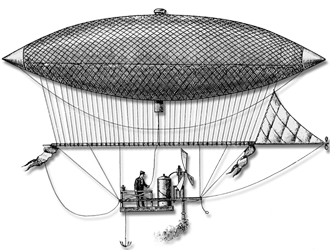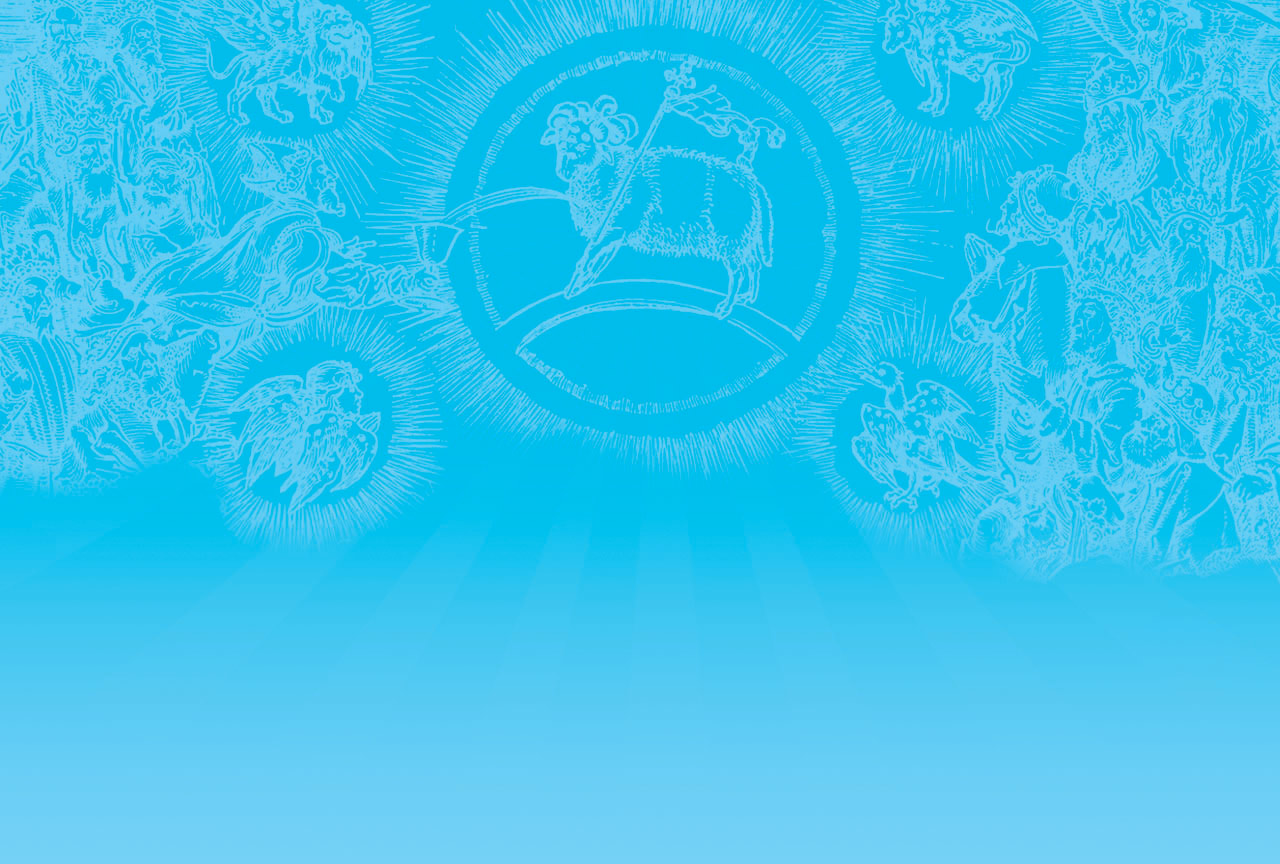In the beginning
Through the centuries, we have used the symbol of a shining light to signal a search for truth. Old Diogenes looked with his lantern for an honest man. The prophets revealed the light of religious truth. The Dark Ages were bad; the Enlightenment, good. It seems only natural that journalists, when their time came, would take the metaphor to heart. From America, Mark Twain reported: “There are only two forces that can carry light to all corners of the globe — the sun in the heavens and The Associated Press down here.” Today on their websites, Scripps company newspapers display their logo, a bold blue lighthouse, shining the light “so people can find their own way.”

I thought of this one day on Miami Beach, where the summer sun beat down like a Caribbean drum, a pat-a-bee-bee-bam on hot steel. I was looking for my friends in the crowd but could not see a thing. The light was just too bright. Everyone was hiding in plain sight. Even squinting, I could not see them through the glare.
A lantern, lighthouse or any kind of searchlight, I did not need.
I needed a pair of sunglasses.

Wandering blindly on scalding sand, it’s funny what you think about. Diogenes wandered too, a cynical ascetic who was not really looking for the truth, but carrying his lantern during the day to mock all that was Greek. Diogenes was a contrarian. And he had a point: Light is not always good, nor is darkness always bad.
In the digital age of communications, journalists need new metaphors. Shining a light works when information is scarce, and it still is, at times. But today news also can be abundant. When everything is already all lit up, a searchlight is just another thing you can’t see. Think of it: The Internet has become a perpetually open library of the human mind; social media, the new Messenger God of breaking news; more data produced every second than can be consumed in a lifetime. The glare is overwhelming. Truth hides in the open.
Today, journalists who want to help us see, to help us find our way, must find a way to provide sunglasses to calm the blinding light. We need honest filters. We need journalistic search engines and tools that dig deep for facts. We need digital sunglasses — technology that can tell you if social media is being generated by software like Twitter Bots or by the public relations people who manage online reputations. The role of professional journalism is not shrinking. It’s growing. We need to verify and clarify stories, but also navigate and curate cyberspace.
Thinking digitally could save us. Yet two decades after the dawn of this new age, most journalists and journalism educators still resist it. Too many people, processes, policies and products are creatures of the past. In a way this is to be expected. “There is nothing more difficult to take in hand, more perilous to conduct, or more uncertain in its success, than to take the lead in the introduction of a new order of things,” wrote Renaissance philosopher Niccolò Machiavelli. The innovator “has for enemies all those who have done well under the old conditions.” Every day, however, someone pays the price for journalism’s persistent inertia. Once rock-solid companies crumble. Old-school students and professionals can’t find work. Our public policies and professional ethics preserve historical fantasies instead of embracing new realities, new possibilities.
I’ve seen this up-close. I work at the John S. and James L. Knight Foundation. We don’t just fund journalism and media innovation. We came from it. The foundation grew from the fortunes of Jack and Jim Knight, who built what was once the largest newspaper group in America, Knight-Ridder.
Foundations are like watering holes. Everyone shows up, from the 20-something social entrepreneurs to the venerable media icons. Access to this broad spectrum of people has shaped Searchlights and Sunglasses.
The younger visitors to Knight Foundation, the digital natives, travel light, no clunky machines or ideas weighing them down, fluently negotiating what Paul Simon called the days “of miracle and wonder.” The young live lives with few boundaries. They grew up with smart phones, with literally the whole world in their hands. But the older ones, the digital immigrants, often come to see us in a state of anxious astonishment. When they started in news, no one knew that the mechanical age of mass media, inspired by Gutenberg more than 500 years ago, was coming to an end. The veterans remembered typing stories on manual typewriters. They remember how after much hot lead and clanking presses our townspeople would get their news. Today, for every new idea young innovators have, elder journalists seem to have a new worry.

This digital book looks at how this new age is changing (or not changing) journalism and journalism education. It consists of field notes from a search for ways that great reporting can survive and thrive amid constant change. Though these articles and speeches first appeared during the past few years, disturbingly little happened to address their issues.
You will read a lot about Knight Foundation in these chapters. This is not to promote ourselves. We already have done that. Rather, it is to show how our grant-making during the past decade has tried to mirror the challenges of journalism writ large. The first chapter describes how the world arrived at this new age of communication. The next focuses on journalism education reform. We then consider public policy and freedom. And we look at what it means to say journalists must not just inform communities, but engage them in every facet of how news is made, from story tip to impact.
Searchlights and Sunglasses is about journalism and change. You do not need be a bleeding-edge technologist to understand this book; it’s for the middle of the bell curve, especially for the journalism educators who by now should be changing but can’t seem to get started. In a way, the book is like a giant pair of sunglasses, filtering the endless beams of “new information” about the future of news. Thanks to a team organized by the nation’s oldest journalism school, the University of Missouri, with the touch of a button the book becomes a classroom edition. In this “learning layer,” you will find lessons, discussions, activities, videos, links and research assignments designed to help teachers and students get the most out of a digital book experience.
What you won’t find here is a final answer to the question of the future of news, because there isn’t one. Like democracy itself, professional journalism is a somewhat messy experiment. We don’t know exactly where it’s headed, but some things seem clear. The digital age is not some kind of fad. It is nothing less than the fourth great age of human literacy — after the rise of the image, language and mass media. Visual literacy made tribes possible. Language brought us cities. Mass media inspired modern nations. Will digital literacy unite the world? Perhaps. The unprecedented power of data will not automatically end famine, disease or war. Digital tools are just that, tools. They amplify human hopes and fears. They allow the entire networked world to react, or overreact, instantly. Today’s tools provide a powerful test for us all.

Without a doubt, the digital age has turned traditional journalism upside down and inside out. Almost everything is in flux: who a journalist is, what a story is, when and where the news arrives and how we deal with newly interactive communities. The times are literally rewriting the fundamental who, what, when, where and how of journalism. A journalist can be anyone. A story can be a database. It can be available anytime, anywhere in any medium. It can include commentary and analysis from the community itself. If the news community doesn’t adapt, we may lose an entire century of professional journalism development. The watchdog tradition, the courage, the ethics — all of it — will be as useful as a flashlight in Miami’s bright summer sun.
The one thing that isn’t changing is the why of journalism, why free people need independent thinkers who will engage, on behalf of us all, in the fair, accurate, contextual search for truth. We assume readers of this book already believe an understanding of current events is essential if free people are to run their communities and their lives. You are a student, teacher, journalist or a citizen consuming and creating news. This is our starting point: We believe in journalism. The challenge is to find our place as both chroniclers and curators of a new world, to add today’s digital skills and ideas to the mix and get on with it, because much more is on the way. Truth be told, we ain’t seen nothin’ yet.
- OFF
- ON






























 Learning layer directory
Learning layer directory
